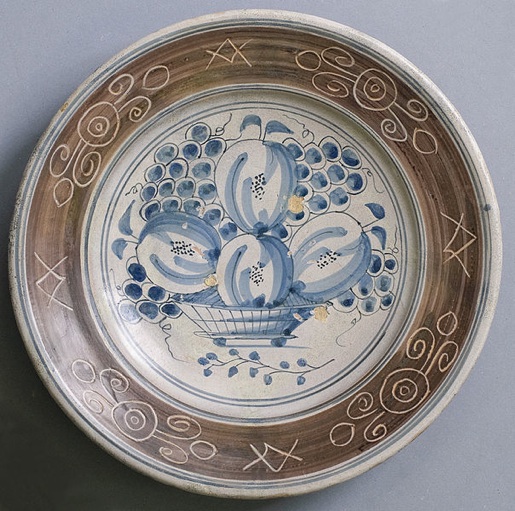Faux Sgraffito
About
Faux Sgraffito
About

The pysanky pictured above were written by Iryna Vakh, and are taken from her small photographic album «Намалюю голос пісні». The technique she uses is her own, and produces lovely rainbow eggs. I have chosen to call this technique faux (false) sgraffito, because it reminds me of the crayon drawings we used to make as children. We would scribble all sorts of colors on a piece of paper, then color over them all with a black crayon, To create a picture, we would take something sharp, and scratch through the black crayon down to the colored base. The result would be something like this:

I learned later that this is a form of the technique called sgraffito, whose name is derived from the Italian word graffiare ("to scratch"), and ultimately from the Greek γράφειν (gráphein) "to write." Per Wikipedia, it is a technique either of wall decor, produced by applying layers of plaster tinted in contrasting colors to a moistened surface, or of ceramics, by applying to an unfired ceramic body two successive layers of contrasting slip, and then in either case scratching so as to produce an outline drawing. This is an example of sgraffito on a ceramic plate:

The sgraffito technique can be adapted to other media as well: paint, crayon, glass. During the Middle Ages, especially in panel painting and in the illumination of manuscripts, gold leaf was often used. In stained glass, the scratching is done through a top layer of colored glass, revealing clear glass below.
Eggs can be decorated with true sgraffito: dryapanky are an example of this technique, as dye is applied to an egg and then a designed is scratched through it down to the white eggshell. The “faux sgraffito” eggs above look as though they have been made with this technique, but are actually created with ordinary wax-resist. How?
Quite simply. An egg is colored in a “splotchy” manner with numerous dyes, using a brush of some sort. Two or three colors are usually chosen, and the colored areas allowed to overlap and run into each other.

A design is then written with beeswax on the surface of this egg. The egg is dyed a darker color (I like black), and then the wax removed, just as with an ordinary pysanka. The result is quite different, though:

The egg above has a Sokal-style floral design. Just about any sort of design, though, can be adapted to this technique.
Back to MAIN My Pysanky page.
Back to MAIN Faux Sgraffito page.
Search my site with Google
Imitation scratchwork
